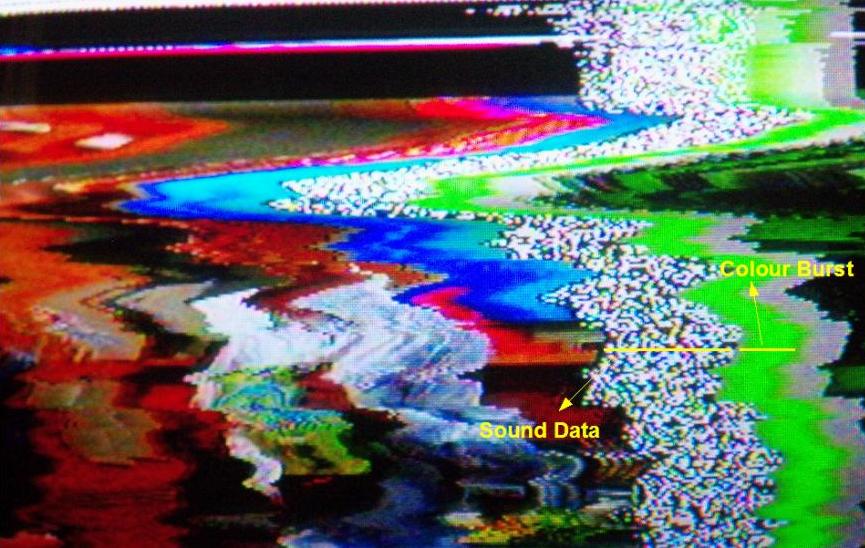When NICAM audio for television was introduced in South-Africa most people thought it was the first time digital sound was available from a TV. However, MNET broadcast digital sound right from the beginning in 1986. The MNET decoder would extract the sound data from the area occupied by the sync pulses on a regular video waveform.
Here is an article I wrote on how it worked. It was based on a technology developed by the BBC to simplify signal distribution between transmitter sites and studios. Enjoy!

and the page
http://www.myprius.co.za/nbtv_and_sstv.htm#MNET
The sound data burst during each horizontal sync pulse period is 36 bits long. Also, the audio data appears to be 8bit PCM. This means that 4 x 8 bit samples can go into a sync pulse with 4 bits to spare for error correction, timing etc...The sound is also scrambled. That's why it looks like random noise (snow). Appropriate pre/de-emphasis should be able to cope with the quantisation noise of an 8-bit PCM system.
Here is an article I wrote on how it worked. It was based on a technology developed by the BBC to simplify signal distribution between transmitter sites and studios. Enjoy!

and the page
http://www.myprius.co.za/nbtv_and_sstv.htm#MNET
The sound data burst during each horizontal sync pulse period is 36 bits long. Also, the audio data appears to be 8bit PCM. This means that 4 x 8 bit samples can go into a sync pulse with 4 bits to spare for error correction, timing etc...The sound is also scrambled. That's why it looks like random noise (snow). Appropriate pre/de-emphasis should be able to cope with the quantisation noise of an 8-bit PCM system.
